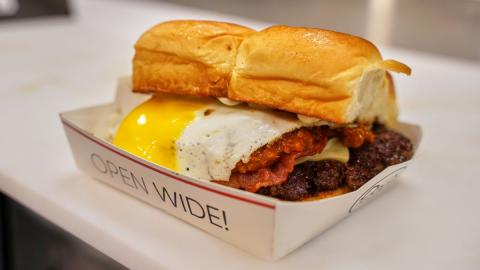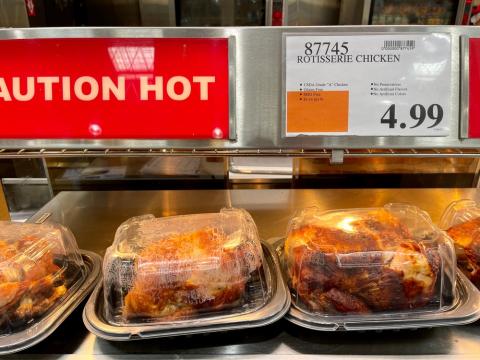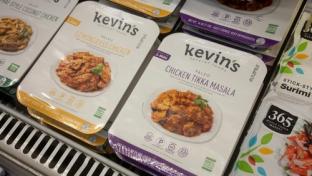Consumers Ditch From-Scratch Shopping for Easy Meal Solutions

As consumers settle into a new post-pandemic normal, meal prep habits are shifting. At-home meal consumption, which soared during the height of the pandemic, is now being driven by inflation.
While consumers embraced more from-scratch shopping during the pandemic, they’ve since returned to a preference for easy and convenient meal solutions that they can find at the local grocery store. Nielsen IQ data cited in FMI — The Food Industry Association’s most recent “Power of Foodservice” report shows that deli prepared food dollar and unit sales grew in 2022, along with purchase frequency among heavy buyers.
“We’re increasingly seeing demand for pre-made meals grow as customers look for convenient and affordable meal solutions to supplement their weekly grocery shop,” says Rob Hill, general manager of order ahead at San Francisco-based Instacart. According to Hill, since prepared food and catering items are typically some of the most profitable items sold in-store, retailers have an opportunity to expand their offering for customers, grow loyalty and enhance their businesses overall.
FMI’s research shows that shoppers seeking convenient meal options are embracing a hybrid approach to meal preparation, mixing different types of dinner meal-prep styles — from scratch to prepared meals.
“Retailers can take advantage of that trend by giving consumers information on how to put together the whole meal,” says Rick Stein, VP, fresh foods at Arlington, Va.-based FMI. “Sell them the rotisserie chicken and teach them a recipe on how to make that into a casserole, along with salad and dessert.”
Stein sees an opportunity for foodservice departments to expand assortment and offer more culinary options. He believes that food retailers offering more specialized culinary options can gain a reputation among shoppers for foodservice excellence.

Maximize Strengths
To make the most of their foodservice departments, supermarket retailers should lean into their strengths, experts contend. “Retailers have different levels of foodservice sophistication,” observes Stein. “Some offer just rotisserie chicken, while others have full sit-down restaurants. We recommend that retailers develop a few ‘reputational’ offerings and emphasize those items in the marketing of their retail foodservice.”
Lewis Shaye, president of Columbia, S.C.-based Grocerant Design Group, agrees that narrowing offerings to focus on a specialty in a specific area — whether it’s a sandwich, chicken or pizza program — is a recipe for success. “Regional operators need to be distinctive,” advises Shaye. “They need to offer items that set them apart and create buzz.” He recommends mining for new twists on fan favorites.
“If you’re already doing a great job with rotisserie chicken, adding a French herbal or a citrus-marinated version can really build that business,” suggests Shaye. “A chain offering a sub sandwich program should look at core breads, meats and cheeses to find that twist or local deviation, like a special hot-pepper spread, that makes it unique and special. You can differentiate on shape, size or flavor.”
Shaye notes that in the prepared food segment, supermarket retailers are competing not just with other supermarket chains, but also with fast-casual and quick-serve operators.
Retailers with established strengths are seeing their businesses take off. The Kroger Co., based in Cincinnati, has become the biggest sushi retailer in the United States, according to a recent report in The Wall Street Journal, while its Home Chef roasted chicken products are “wildly popular” with consumers, since these products “offer convenient and healthy options at affordable prices,” says Teresa Sabatino, director of customer marketing at Home Chef.
“Baked chicken continues to be a customer favorite, along with our Simple Truth Whole Chicken and Home Chef Turkey Breast,” adds Sabatino. “Home Chef’s convenient in-store meal solutions, especially heat-and-eat meals that range from [a] single serving to family size, are customers’ go-to. Additionally, the Home Chef line of Culinary Collection meal kits has proven popular with shoppers who are looking for a little more adventure when it comes to flavors and cooking techniques.”
FMI’s “Power of Foodservice” report stresses the power of localizing offerings to specific markets and offering seasonal and limited items. “If strawberries are in season, throw strawberries and pecans into a prepared salad,” counsels Shaye. “There’s more relevance, and customers feel good about the freshness.”
Meal deals and bundles are another proven strategy for driving sales and trial. “It’s important to offer a variety of options,” says Stein. “One way to do that is meal deals and bundles. Another is daily or weekly specials such as a Friday date-night special menu, or Taco Tuesday, Meatless Monday theme days. Combining these special offerings with clear nutrition information is a win for shoppers.”

Raise the Profile of Prepared Foods
One clear message from FMI’s research is that retailers need to raise the profile of their foodservice offerings in-store and through their communications channels.
“Most consumers say grocery deli/prepared foods are a good value compared to eating at a restaurant or ordering takeout, but when asked why they would buy restaurant versus grocery deli/prepared foods, 43% said that while the latter is a good option, they just don’t think about it,” notes Stein. “Food retailers can do more to market their foodservice offering through traditional and digital channels, including store apps and websites.”
“Eye-catching, shoppable point-of-sale materials that enhance the shopping experience are of primary importance,” says Lippold, while according to Shaye, “When you start to leverage prepared foods with the power of your circulars and factor in visual cues on carts and other in-store messaging, you start to get synergy among departments.”
Delivery and grab-and-go, which were important during the height of COVID, remain crucial to the success of prepared foods. Shoppers also want drive-thru options, separate checkout in the deli/prepared area, delivery, and outside pickup stations.
Juan De Paoli, VP, Our Brands at Kroger, says that the retailer is focused on providing more ways for customers to get fresh food seamlessly, whether it’s in-store, through Kroger pickup or delivery, or via collaborations with third parties. Its collaborations with Kitchen United and other ghost kitchens in select geographies enable customers to order fresh food from multiple national, regional or local restaurant brands at the same location. “We make it easy for customers by offering in-store pickup or delivery on-demand,” notes De Paoli.






